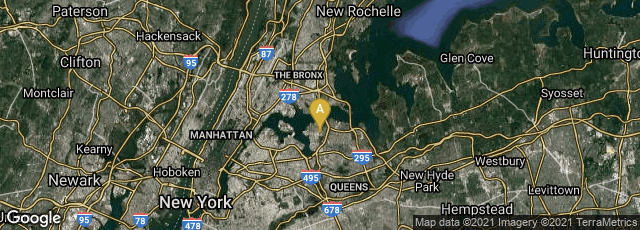

A: Queens, New York, United States
On March 26, 2019 The New York Times published in print and online a dramatically illustrated account written by Luc Sante of its high spreed newspaper printing processes entitled The Daily Miracle: Finding Magic Inside The Times's Printing Plant. The subtitle of the article was "The photographer Christopher Payne spent two years shooting The Times's printing plant in College Point, Queens. He captured the craft, precision and unexpected beauty of the newspaper printing process."
The article was a paean to the experience of producing and reading a physical newspaper--an experience which by 2019 had become a minority approach to reading the news, but which still retained a relatively large and loyal following. The text began as follows:
"Consider the newspaper, the physical object, printed on processed wood pulp, shot upward on rollers at high speed as ink is applied, gathered and folded and bundled, dropped off at newsstands and bodegas or delivered to doorsteps. Nowadays it is a minority choice, as a majority of consumers around the globe opt to get the latest word from their screens as they zoom from one place to the next. But that minority of readers is substantial, and fierce. They savor the thrill of the first hit of newsprint in the morning, with its slightly acrid odor and its ironclad association with the first cup of coffee. They have mastered the origami skills required to read the paper on the subway. They appreciate the staggered hierarchy of the front page — the significance of the top left corner, the relative point sizes of major and minor headlines, the weight of an obituary (say) that lies above the fold, the nuance of features heralded in the bottom third — not because they are lesser but because their front-page appearance is merely the tip of a much larger body within. And they can foretell how their copy will end up: folded to the crossword puzzle, decorated with various stains, missing a recipe or a travel tip, ready to return unto pulp.
"Unlike its digital counterpart, the physical newspaper is not just a transient occurrence along an ongoing stream; it is a singular phenomenon, which happens every day. The city may no longer feature vendors shouting the main headline at passing commuters, but that headline still carries a sense of urgency, can still thrill or appall when caught unexpectedly in a sidelong glance. A newspaper is a measure of days, an index of passing time. Its front page compresses the significance of a unique date into a rectangular field of words and images, its jarring list of specifics unforeseeable until press time. Why else would Picasso and Braque have chosen the newspaper as both their model and their source when they began making collages in 1912? How else could filmmakers convey the galloping speed of history but with a process-shot montage of spinning newspaper front pages? How else would kidnappers prove that their victims were still alive on a given day other than by photographing them holding that day’s Late Final?
"Online you are encouraged to compose your own newspaper, according to your personal algorithmic specifications. The paper model ensures that although you can ignore entire sections (at your peril), you will at least skim the principal news part from stem to stern, reading the headlines. Along the way you will become absorbed in stories no mathematical formula would have selected for you. And if your flight is grounded, you will end up reading the entire paper, down to the small ads, and possibly come away with several new interests as a consequence."